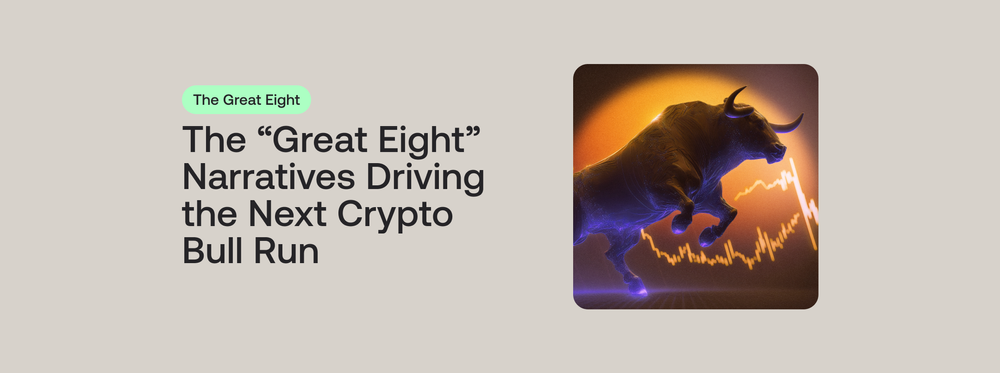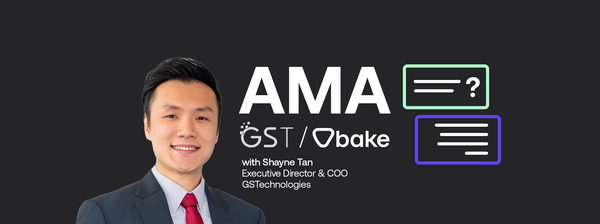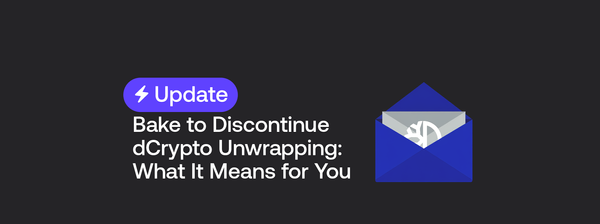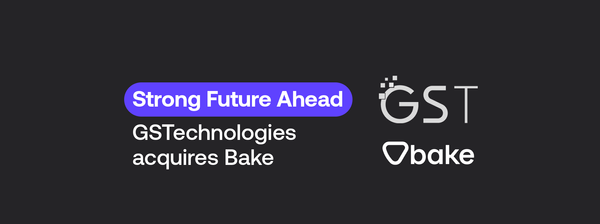The “Great Eight” Narratives Driving the Next Crypto Bull Run
The crypto market has experienced three major bull markets in its history – the Altcoin maina of 2013, the ICO boom of 2017, and the DeFi and NFT craze of 2021.
All three bull runs are remembered by two things:
- The year they occurred
- The reason they occurred
A common characteristic of every crypto bull run has been a leading narrative.
A new idea, a novel technology, or just a well-told marketing story has inspired investors and driven the market to new heights.
With the next bull run anticipated around the corner, the question investors are asking: what narrative will propel crypto markets to new heights, minting new millionaires?
While nobody has a definitive answer, there are signs of emerging projects within growing crypto sectors.
GameFi: Blockchain Gaming
The first narrative poised to generate significant hype is GameFi. GameFi is the fusion of gaming and finance on the blockchain. It is centered around creating decentralized gaming experiences where players have true ownership of in-game assets.
Why GameFi?
Analysts forecast the GameFI industry will be worth over US$300 billion by 2030, rising significantly from US$8 billion in 2022. This stratospheric growth means the blockchain gaming industry in 2030 will be worth more than the current gaming industry as a whole (valued at US$242 billion).
Technology:
GameFi projects use blockchain to create decentralized gaming environments. Assets within these games are often in the form of NFTs or other tokenized assets. These assets can be earned within the game, and then traded or sold on exchanges outside the game. This adds a new dimension to gaming, allowing players to monetize their time and skills.
Projects:
Immutable X (IMX) is leading the charge in the GameFi revolution. Over the last year, Immutable has built more than 200 games and holds almost 70% of the blockchain gaming market share. Immutable’s platform offers a scaling solution for NFTs in gaming, enabling minimal gas fees and instant trades. This is a significant development in the space, as it addresses the two biggest barriers to blockchain gaming — high transaction costs and slow speeds.
Narrative:
The GameFi narrative is a cultural shift in the gaming industry. By empowering players with true ownership and the potential for financial gains, GameFi platforms like Immutable X are paving the way for a new era of gaming and player monetization.
Ethereum Layer 2 Solutions
Ethereum's high gas fees and slow transaction times have given rise to a dedicated sector in the industry — Layer 2 scalability solutions. These solutions are specifically designed to handle the increasing demand for Ethereum's network, enhancing its ability to support more users and applications.
Technology:
Layer 2 solutions operate by processing transactions outside the main Ethereum chain (Layer 1). They then send these transitions back to the main chain in the form of a “rollup” or data package. This reduces congestion, leading to faster transaction speeds and lower costs, while still leveraging Ethereum's security.
Projects:
Polygon (MATIC/POL) is a leader in this area. It offers both a sidechain, and Layer 2 solution for Ethereum. Its technology is crucial for a range of applications in the Ethereum ecosystem, from DeFi to NFTs, making it a pivotal player in Ethereum's scalability narrative.
Narrative:
The growth of Ethereum through Layer 2 solutions is expected to drive further innovation in the industry. By solving the scalability challenge, Layer 2 solutions are paving the way for the next evolution of decentralized applications.
Tokenization of Real World Assets (RWA)
The tokenization of real-world assets (RWA) is about creating a version of real-world assets in the digital world. This narrative focuses on using blockchain to create tokens that represent real estate, art, or commodities, creating a new way to manage and invest in these assets.
Technology:
Tokenization involves the creation of digital tokens on a blockchain that represent ownership or a stake in real-world assets. These tokens are often governed by smart contracts, which helps to ensure their transparency, security, and efficiency.
Projects:
Avalanche (AVAX) is at the forefront of this emerging trend. Builders in the Avalanche ecosystem are leveraging its high-performance blockchain to integrate real-world assets into DeFi.
Narrative:
Tokenizing real-world assets opens up new opportunities for investment. It allows for fractional ownership and easy transferability of assets that were previously illiquid or difficult to divide. It also creates greater market efficiency by providing a secure, transparent, and accessible platform for asset management.
Smart Contracts and dApps on Bitcoin
Another narrative that has already begun is the integration of smart contracts and decentralized applications (dApps) into Bitcoin. This development extends the functionality of Bitcoin, allowing it to support a wide array of applications beyond its original use as a digital currency.
Technology:
This advancement is made possible by projects building additional layers or “platforms” on top of the Bitcoin blockchain. These platforms allow for the creation and execution of smart contracts and dApps, bringing functionalities like DeFi and NFTs to the Bitcoin ecosystem.
Projects:
Stacks (STX) is one of the leading projects creating an ecosystem that allows for smart contracts and dApps to be built on Bitcoin. It extends Bitcoin's capabilities by providing a more agile, semi-standalone execution layer for smart contracts.
Narrative:
The addition of smart contracts and dApps to Bitcoin is a significant step forward for the industry. It allows Bitcoin to be used in ways that were previously impossible, leading to increased adoption and value for the Bitcoin network.
Modular Blockchains
Modular blockchains are a new way of addressing the long-standing challenges of scalability and security in crypto. Unlike traditional blockchains, where all network functions are bundled together, modular blockchains divide these functions into separate layers.
Technology:
The key innovation in modular blockchains is the separation of the data availability layer from the consensus mechanism. This design allows for the parallel processing of transactions and data storage. By offloading the data storage to a dedicated layer, the consensus layer can operate more efficiently, leading to faster transaction speeds and lower fees.
Projects:
Celestia (TIA) is the first project to break ground in this field. As the first-ever modular network, Celestia is designed to securely scale as its user base grows, making it easy for anyone to launch their own blockchain.
Narrative:
The promise of modular blockchains like Celestia lies in their potential to support a vast ecosystem of dApps, without compromising on security or decentralization. This makes them an attractive solution for developers looking to build both scalable and secure blockchain applications.
Blockchain Operating Systems
Blockchain operating systems provide developers with a range of tools and services to facilitate dApp development, even for those with limited blockchain experience. They make features like cloud integration, user-friendly interfaces, and pre-built smart contract templates available to make it easier to build and deploy dApps.
Technology:
A key feature of blockchain operating systems is their ability to execute commands and transactions directly on a blockchain. They enable these actions to be recorded, authenticated, and executed on a blockchain through the cloud via a Graphical User Interface (GUI), creating an immutable, anonymous record of events on-chain.
Projects:
NEAR Protocol (NEAR) is a blockchain operating system making strides in the field. It is the first platform to allow developers to utilize multiple common programming languages, like Rust and JavaScript. This makes it possible for developers to transition from building traditional apps to building dApps with ease.
Narrative:
Blockchain operating systems make crypto more accessible and user-friendly. By simplifying the process of dApp creation, these platforms accelerate the growth of blockchain technology, making it available to a larger range of users.
DePin: Decentralized Physical Infrastructure Networks
DePin (Decentralized Physical Infrastructure Networks) leverages blockchain technology to build, maintain, and operate infrastructure in the physical world in an open and decentralized manner.
Technology:
DePin allows users to contribute their computing resources to a shared network, where it can be utilized for complex real-world tasks. In return, they are rewarded with tokens, creating a tokenized ecosystem for sharing digital resources and computing power.
Projects:
Render (RNDR) is a pioneering project in the DePin space. It connects artists and creators with a network of Graphics Processing Unit (GPU) providers over the blockchain. These GPU providers contribute their excess processing power to help accelerate the rendering of their digital content.
Narrative:
DePin provides a cost-effective solution for people who previously lacked access to high-end digital resources. This democratization of resources could lead to a surge in innovation and creativity in fields like virtual reality, gaming, and digital art.
AI Data Sovereignty
AI Data Sovereignty is the merging of artificial intelligence and blockchain technology. It is designed to create secure and decentralized platforms for data sharing and monetization. It will allow users to maintain control over their data while leveraging AI to derive insights and value from it.
Technology:
Secure data marketplaces where data can be shared and monetized are created on the blockchain. AI algorithms are then used to analyze this data, providing valuable insights without compromising the privacy or ownership of the data.
Projects:
Ocean Protocol (OCEAN) uses “data tokens” and NFTs for secure and controlled data sharing. These data tokens provide “permissions” that safeguard user data and allow users to control who accesses their information based on their preferences.
Narrative:
AI Data Sovereignty platforms have the potential to unlock new opportunities in industries such as healthcare, supply chains, and finance by creating a market for secure and transparent data sharing.
Invest in the Next Big Narratives
The next bull run may well be dominated by one, or all of these narratives.
Combined, they have the potential to change how we interact with digital assets, finance, gaming, data, and content creation.
You can invest in the top narratives set to play a major role in the next bull run through Bake’s “The Great Eight” Bundle. The bundle gives you a share in the leading projects for every key narrative, helping to optimize your position for the next market cycle.

DISCLAIMER: Please note that the information on this blog and in any articles posted on this blog is for general information only and should not be relied upon as financial advice. Cake Pte. Ltd., Bake, UAB, and its affiliates (the “Cake Group”) are not licensed financial advisers. You may wish to approach your own independent financial advisor before making any decision to buy, sell or hold any product and/or digital assets mentioned in this blog.
Any views, opinions, references, assertions of fact and/or other statements are not necessarily the views held by the Cake Group. The Cake Group disclaims any liability whatsoever that may arise out of or in connection with such statements. Always do your own research before investing in any financial assets and consult a qualified financial advisor if necessary.




